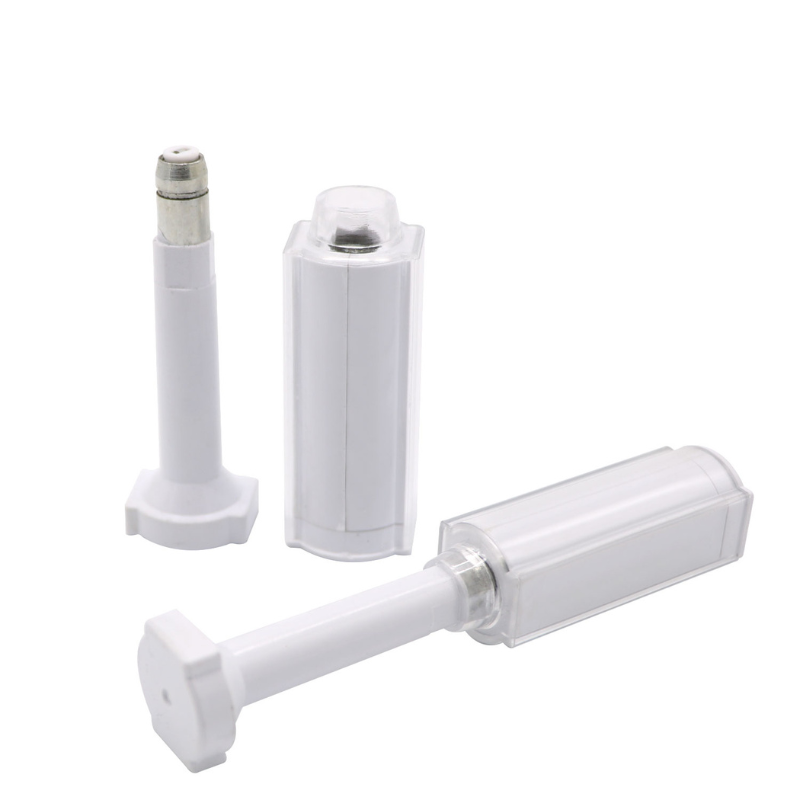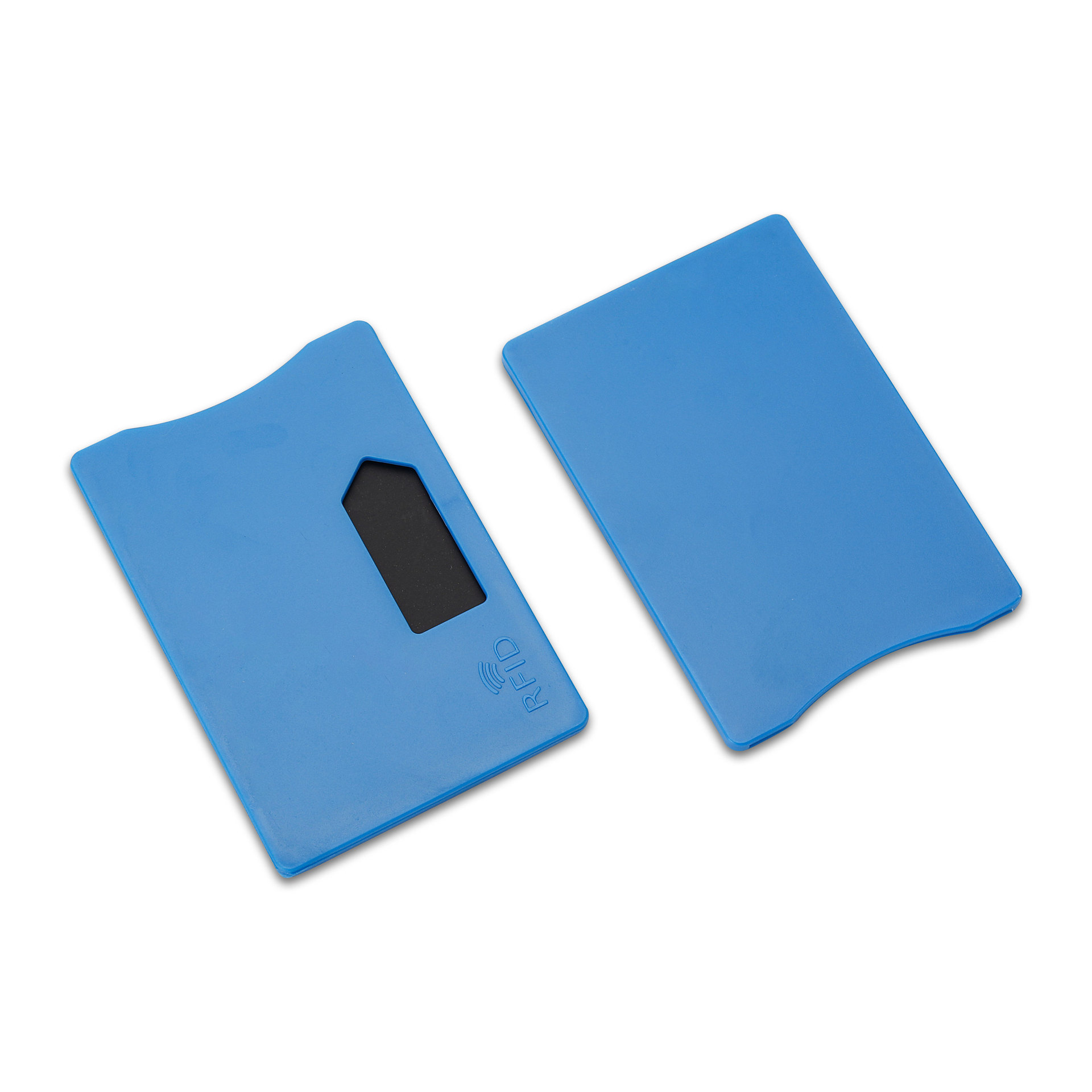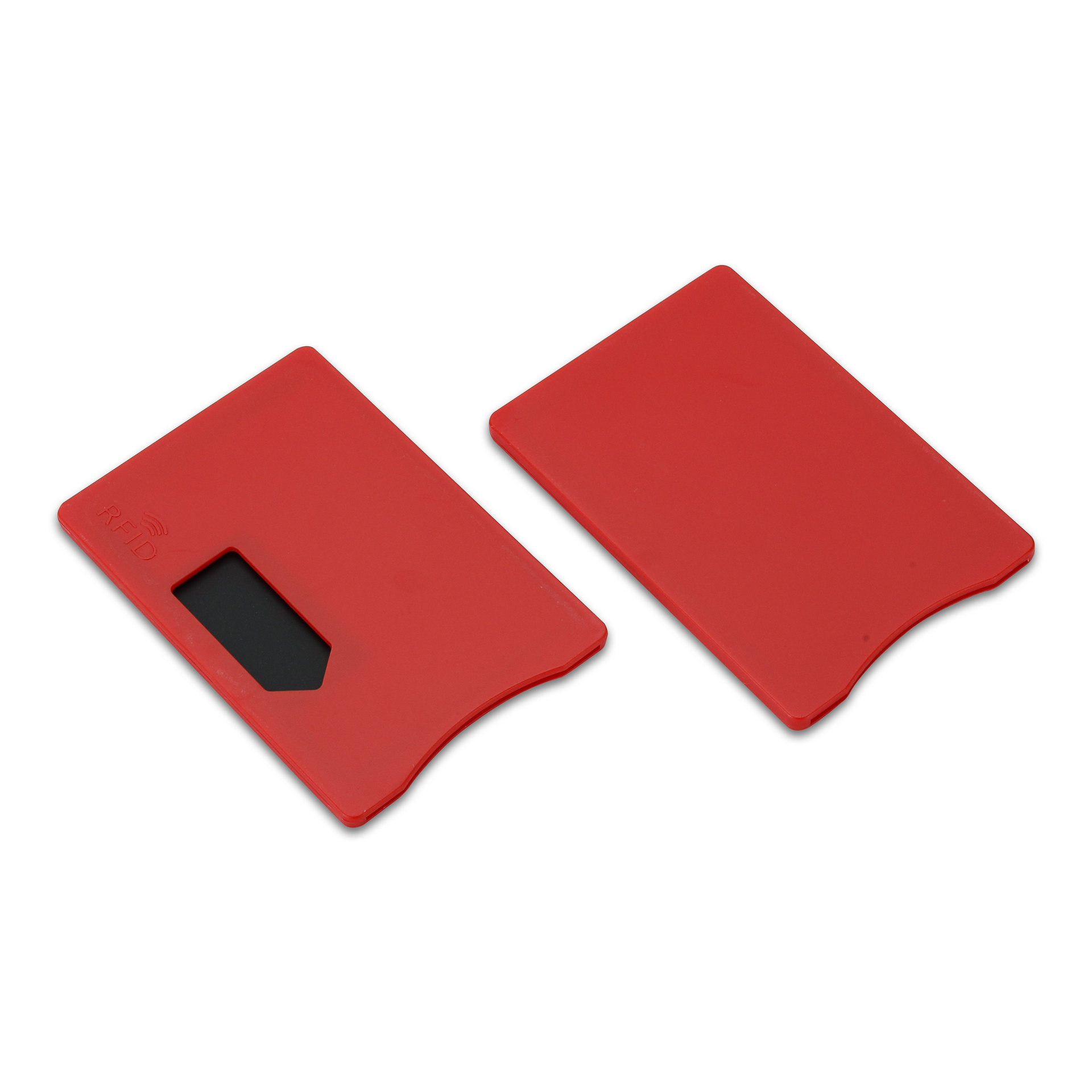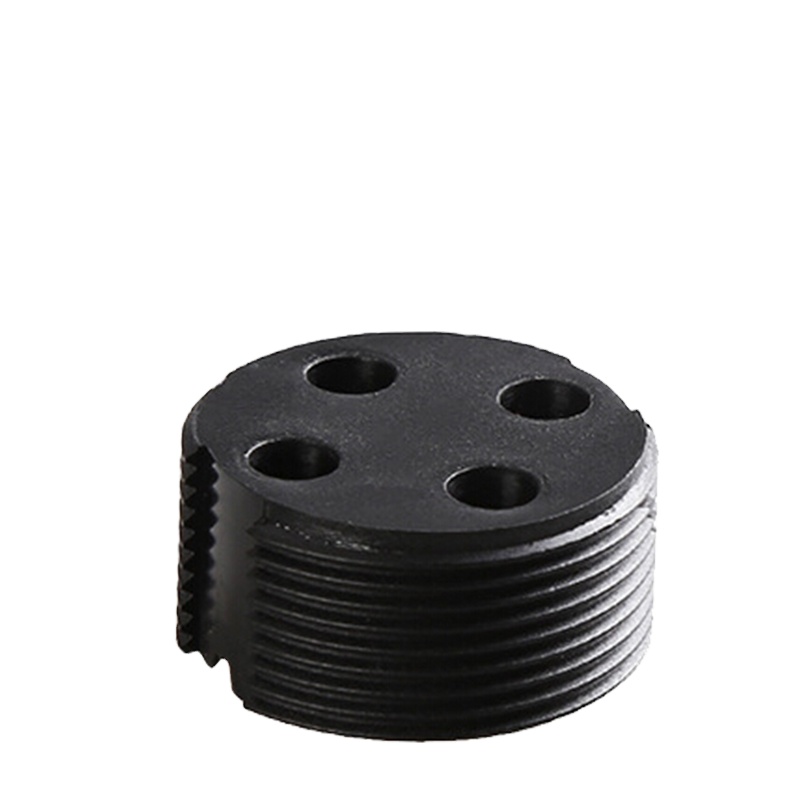
Wat is het verschil tussen RF- en RFID-tags?
Inhoudsopgave
Verschil tussen RF- en RFID-tags: definities, technologie en toepassingen in magazijnen
Deze termen worden echter vaak door elkaar gebruikt, wat leidt tot verwarring over hun werkelijke betekenis en verschillen. Inzicht in het verschil tussen RF en RFID helpt bedrijven hun activiteiten te optimaliseren, hun efficiëntie te verbeteren en slimmere technologische investeringen te doen.
Deze handleiding legt uit hoe RF-technologie en RFID-tags werk, hoe ze verschillen en waarom RFID-technologie moderne toeleveringsketens transformeert.

Wat is RF-technologie en hoe werkt het?
RF (Radio Frequency) verwijst naar het gebruik van elektromagnetische radiogolven om gegevens draadloos te verzenden. Het vormt de basis voor verschillende draadloze communicatiesystemen, waaronder RFID-technologie, wifi en Bluetooth.
Belangrijkste componenten van RF-technologie:
- Zender en ontvanger: genereren en ontvangen van radiosignalen.
- Frequentiebereik: werkt van enkele kilohertz (kHz) tot gigahertz (GHz), afhankelijk van het gebruik.
- Toepassingen: Wordt vaak gebruikt in communicatiesystemen, garagedeur-afstandsbedieningen, draadloze microfoons en beveiligingssystemen.
Kortom, RF-technologie vormt de draadloze backbone die identificatie, communicatie en gegevensuitwisseling mogelijk maakt — en RFID-technologie is een van de meest gespecialiseerde toepassingen daarvan.
Wat is RFID en hoe werkt het?
RFID (Radio Frequency Identification) maakt gebruik van RF-technologie om draadloze identificatie en tracking van gelabelde objecten mogelijk te maken.
Een RFID-systeem bestaat uit:
- RFID-tags
- RFID-lezer
- Antenne en softwaresysteem
Hoe RFID-technologie werkt:
- Lezeractivering: De RFID-lezer stuurt een radiosignaal via een antenne.
- Tagrespons: De RFID-tag vangt energie op uit dat signaal en verzendt opgeslagen gegevens.
- Gegevensvastlegging: De lezer ontvangt het antwoord van de tag en stuurt de gegevens door naar een centrale database of een magazijnbeheersysteem (WMS).
In tegenstelling tot barcodes hoeven RFID-tags niet in het zicht te worden gescand, waardoor meerdere tags tegelijkertijd kunnen worden gelezen en de efficiëntie in drukke omgevingen wordt verbeterd.
Verschil tussen RF en RFID
Terwijl RF de bredere categorie van draadloze communicatie vertegenwoordigt, is RFID een specifieke toepassing van RF-technologie die is ontworpen voor het identificeren van artikelen en het volgen van gegevens.
| Functie | RF | RFID |
|---|---|---|
| Definitie | Algemeen gebruik van radiogolven voor draadloze gegevensoverdracht | Toepassing van RF voor objectidentificatie en -tracking |
| Belangrijkste onderdelen | Zender en ontvanger | Tags, lezers, antennes en beheersoftware |
| Communicatietype | Basis signaaloverdracht | Tweerichtingsidentificatie en gegevensuitwisseling |
| Toepassingen | Radio's, afstandsbedieningen, wifi, beveiligingssystemen | Magazijnbeheer, logistiek, detailhandel, toegangscontrole |
| Gegevensfunctionaliteit | Brengt ruwe signaalgegevens over | Overdrachten van opgeslagen digitale informatie gekoppeld aan fysieke activa |
Hoe RFID-tags werken
RFID-tags zijn miniatuurapparaten die gegevens opslaan en naar een RFID-lezer verzenden. Elke tag bevat:
- Microchip (IC): Slaat unieke identificatiegegevens op.
- Antenne: Ontvangt energie en verzendt signalen.
- Substraat/inleg: beschermt interne componenten.
Wanneer een tag het bereik van een RFID-lezer binnenkomt, verzendt deze gegevens zoals een unieke ID of productcode, waardoor realtime zichtbaarheid in magazijn- of supply chain-activiteiten mogelijk wordt.
Soorten RFID-tags
1. Passieve RFID-tags
- Stroombron: Geen interne batterij; wordt gevoed door het signaal van de lezer.
- Bereik: enkele centimeters tot enkele meters.
- Toepassingen: Detailhandel, voorraadbeheer en tagging op artikelniveau.
2. Actieve RFID-tags
- Voeding: Ingebouwde batterij voor continue signaaloverdracht.
- Bereik: Tot 100 meter of meer.
- Toepassingen: Voertuigvolgsystemen, wagenparkbeheer, monitoring van grote activa.
De keuze tussen actieve en passieve RFID-tags hangt af van uw bereikvereisten, de levensduur van de tags en uw budget.
Toepassingen van RFID-technologie in magazijnen
RFID-technologie transformeert magazijn- en supply chain-activiteiten door automatisering, nauwkeurigheid en transparantie te bieden.
Belangrijkste magazijntoepassingen:
- Voorraadbeheer: realtime inzicht in voorraadniveaus en artikel locaties.
- Dock Management: volgt goederen terwijl ze in en uit faciliteiten worden vervoerd.
- Asset Tracking: Zorgt voor verantwoordelijkheid en traceerbaarheid van waardevolle items.
- Operationele efficiëntie: vermindert handmatige scanfouten en arbeidskosten.
“Magazijnen die RFID-tags gebruiken, kunnen tot 20 keer meer voorraadbewegingen verwerken dan barcodesystemen.”
RFID versus NFC: verwant maar verschillend
Beide NFC (Near Field Communication) RFID maakt gebruik van RF-technologie, maar verschilt qua bereik, doel en communicatiemogelijkheden.
| Functie | RFID | NFC |
|---|---|---|
| Bereik | Groot bereik (tot 100 meter) | Kort bereik (tot 10 cm) |
| Energiebron | Actief of passief | Alleen passief |
| Gegevensuitwisseling | Eenrichtingsverkeer | Tweerichtingsverkeer (peer-to-peer) |
| Toepassingen | Magazijnbeheer, logistiek, asset tracking | Mobiele betalingen, identiteitscontrole, slimme toegang |
NFC kan worden gezien als een gespecialiseerde subset van RFID-technologie, ideaal voor veilige gegevensuitwisseling over korte afstanden, terwijl RFID-tags domineren in industriële tracking en logistiek.
De rol van RF in beveiligingssystemen (EAS-integratie)
Elektronische artikelbewakingssystemen (EAS) maken doorgaans gebruik van RF-tags om diefstal in winkels of magazijnen te voorkomen.
Hoe RF-tagbeveiliging werkt:
- Plaatsing van tags: Er wordt een RF-tag aan de goederen bevestigd.
- Detectie: Beveiligingspoortjes scannen bij uitgangen op actieve tags.
- Waarschuwing: Als een actieve tag passeert, activeert het systeem een alarm.
Door RFID-technologie te integreren, krijgen EAS-systemen een verbeterde detectienauwkeurigheid en automatisering tijdens het afrekenen of verzenden.

Veelgestelde vragen
Wat is het belangrijkste verschil tussen RF en RFID?
RF verwijst naar algemene draadloze communicatie met behulp van radiogolven. RFID is een specifiek type RF-technologie dat wordt gebruikt voor tracking en identificatie via RFID-tags en -lezers.
Kan RFID barcodes vervangen in magazijnen?
Ja. RFID-tags vereisen geen zichtlijn, bieden snellere gegevensvastlegging en zijn duurzamer dan traditionele barcodes.
Zijn RF-tags en RFID-tags onderling uitwisselbaar?
Nee. RF-tags zijn eenvoudiger en worden vooral gebruikt in antidiefstalsystemen. RFID-tags zijn geavanceerder en worden gebruikt voor tracking en gegevensuitwisseling.
Hoe werkt een RFID-tag?
Een RFID-lezer zendt een signaal uit, de tag reageert met opgeslagen gegevens en het systeem registreert dit automatisch – ideaal voor realtime voorraadbeheer.
Conclusie
RF-technologie vormt de draadloze basis van moderne communicatie, terwijl RFID-technologie daarop voortbouwt om slimme, geautomatiseerde identificatiesystemen mogelijk te maken.
- Gebruik RFID-tags voor realtime tracking, automatisering en nauwkeurigheid in opslag en logistiek.
- Gebruik RF-systemen voor algemene communicatie- en detectietoepassingen.
Door het verschil tussen RF en RFID te begrijpen, kunnen bedrijven de juiste tools kiezen om hun efficiëntie te verbeteren, kosten te verlagen en hun activiteiten toekomstbestendig te maken.

Ray Zhou
Dit artikel is geschreven door Ray Zhou, een RFID technologie expert met meer dan 10 jaar ervaring in de industrie.
Reacties
Populaire producten
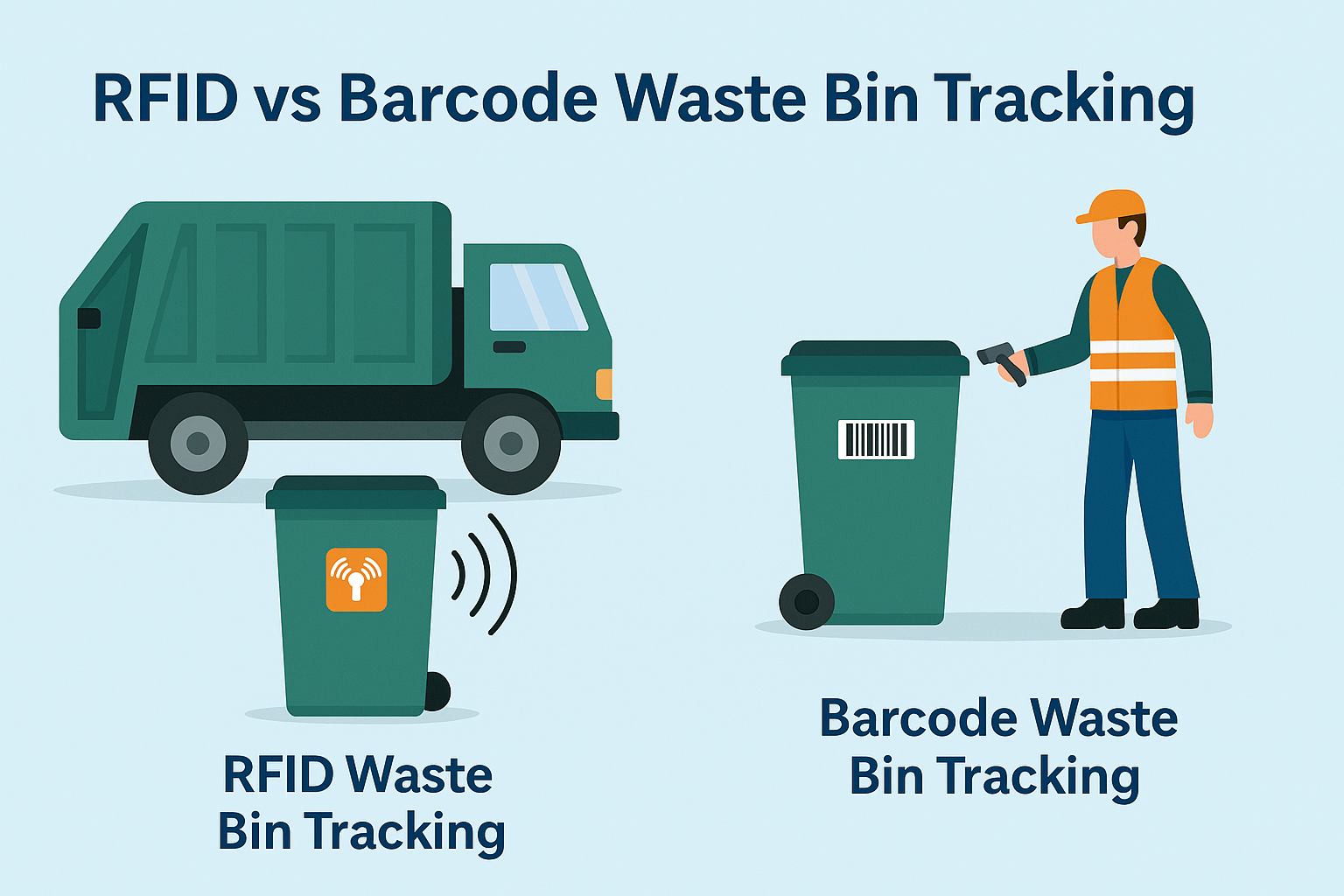
Wat is RFID-afvalbeheer?
Stel je een stad voor waar elke vuilnisbak spreekt – niet letterlijk – maar via een kleine chip die het systeem laat weten wanneer hij vol is, wanneer hij wordt geleegd en waar hij naartoe gaat. Dat is wat RFID-afvalbeheer vandaag de dag doet.
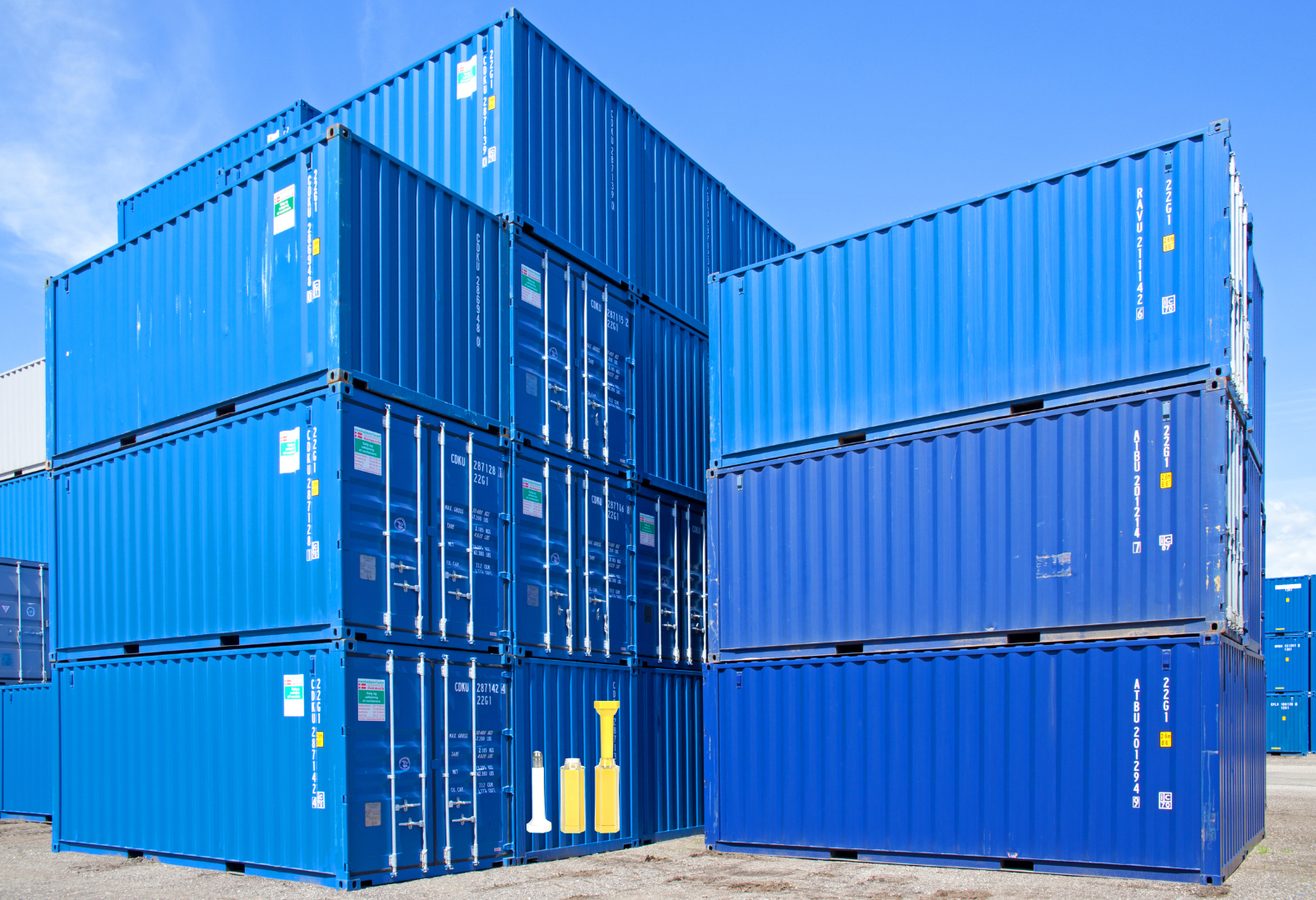
Wat zijn boutafdichtingen en hun toepassingen? | Complete gids
In de wereldwijde handel en logistiek spelen grendelafdichtingen een cruciale rol bij het garanderen van de veiligheid en naleving van de vrachtwetgeving. Deze kleine maar krachtige apparaten zijn ontworpen om zeecontainers, trailers en vrachtdeuren te vergrendelen met een mechanisme dat knoeien onmogelijk maakt.
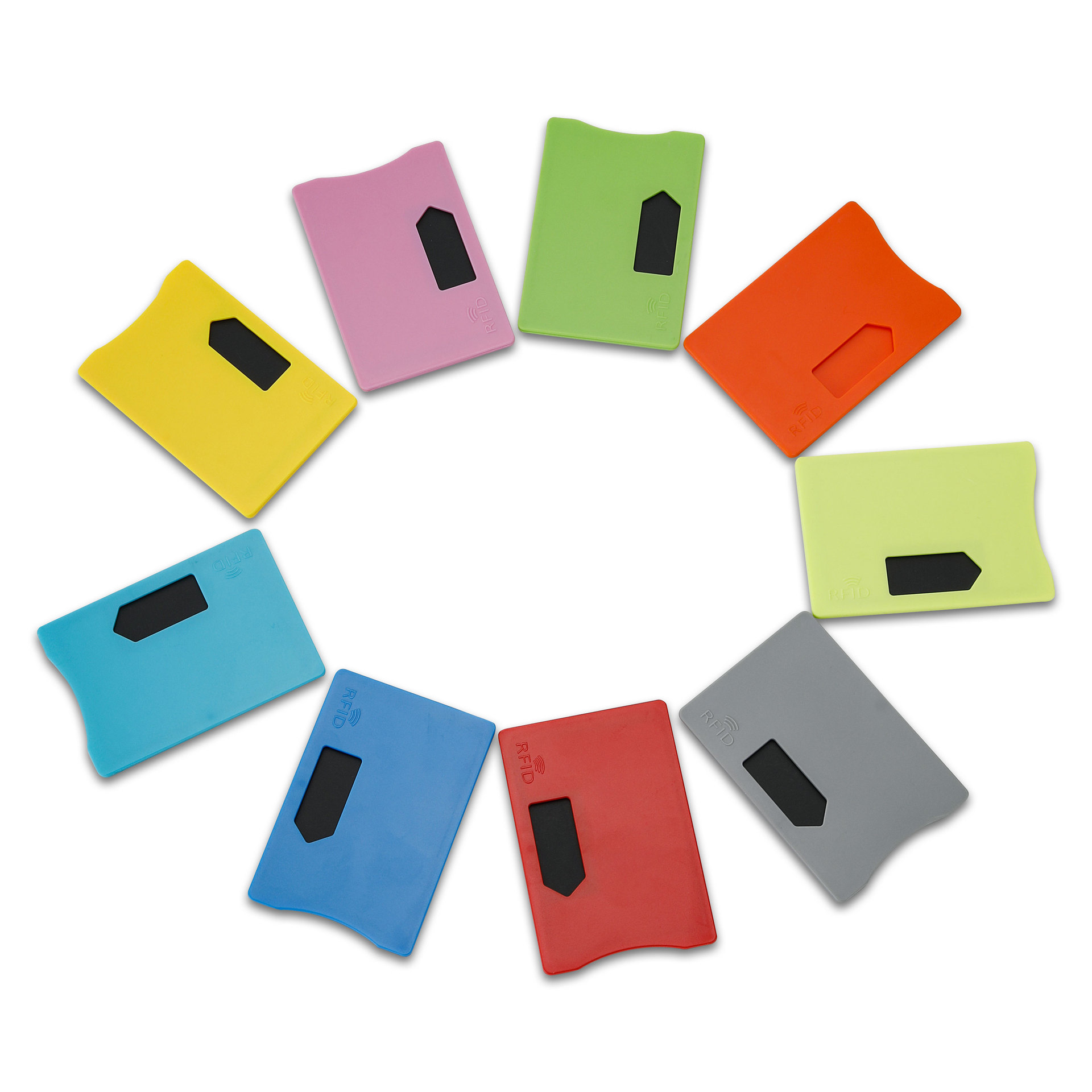
Wat is een RFID-kaartbeschermer? Voordelen, gebruik en koopgids
RFID-technologie (Radio Frequency Identification) is overal: in je creditcards, identiteitskaarten, vervoerspassen, sleutels van hotelkamers en nog veel meer. Het biedt snelheid en gemak, maar het opent ook de deur naar een nieuwe vorm van digitale diefstal die "skimming" wordt genoemd. Dat is waar een RFID kaartbeschermer om de hoek komt kijken.

RFID-polsbandjes voor evenementen: Bulk-inkoopgids voor organisatoren
RFID-polsbandjes voor evenementen worden steeds meer de oplossing voor organisatoren die snellere toegang, fraudepreventie en cashloze betalingen nodig hebben voor concerten, festivals en sportlocaties. In tegenstelling tot papieren tickets of QR-codes gebruiken deze slimme polsbandjes ingebouwde chips om de toegang te stroomlijnen, transacties te beveiligen en de gastervaring te verbeteren.
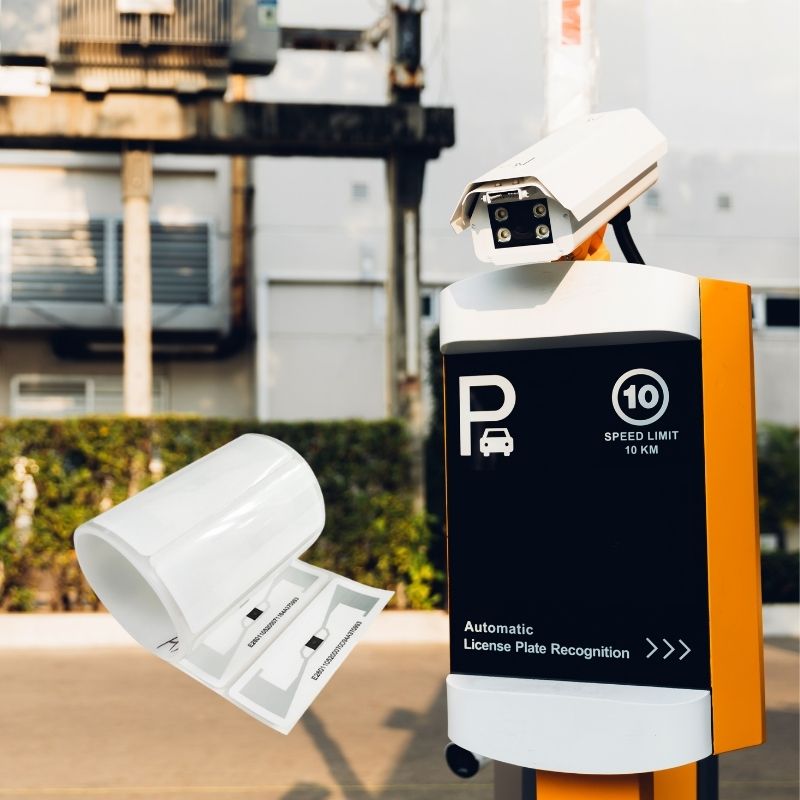
Hoe RFID-tag op voorruit toegangscontrole en tolsystemen voor voertuigen verbetert
In de snelle wereld van vandaag moet voertuigidentificatie snel, veilig en contactloos zijn. Een RFID Tag op de voorruit biedt precies dat - een betrouwbare manier om tolheffing, parkeren en toegangspoorten te beheren zonder voertuigen te stoppen.
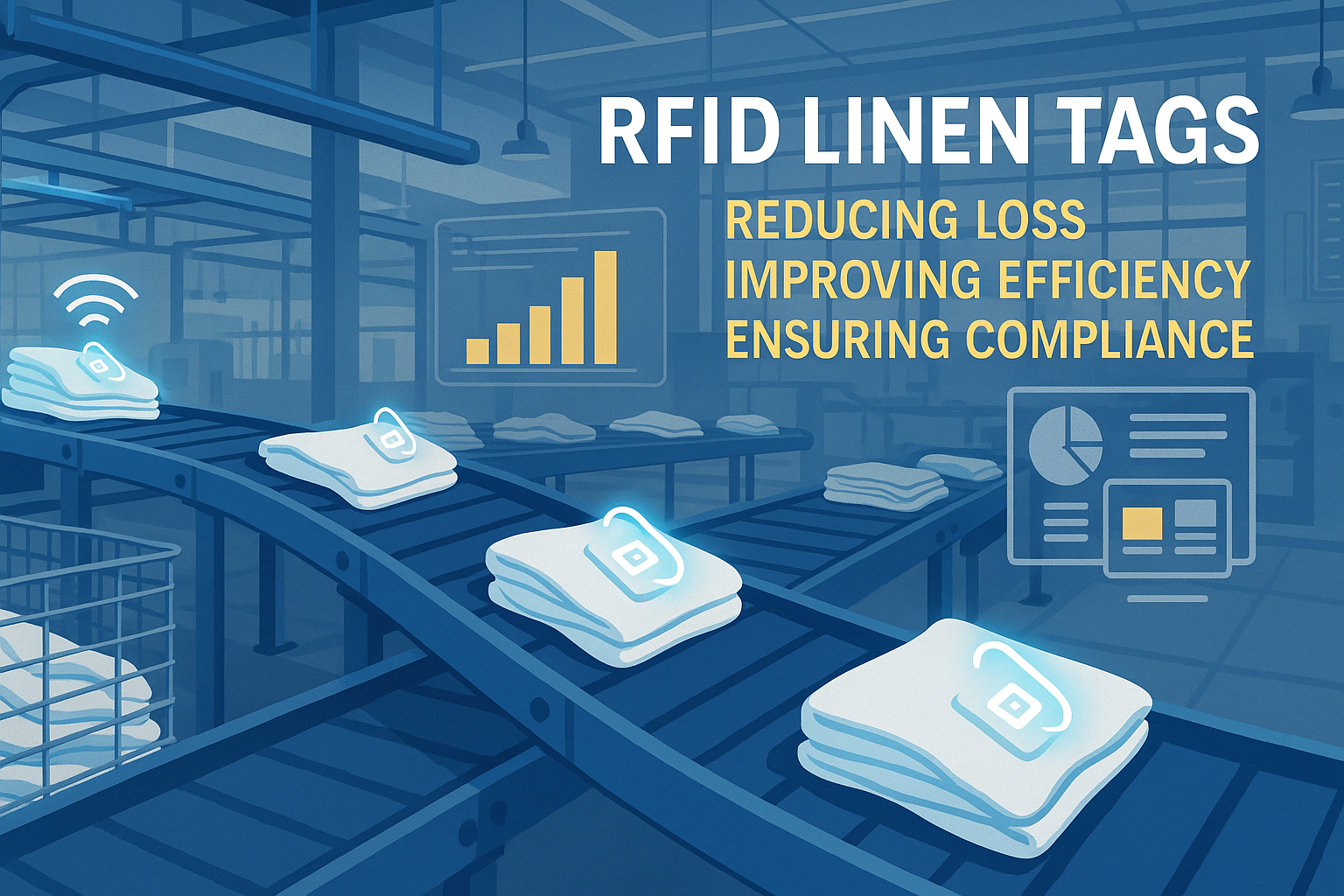
De voordelen van RFID linnen Tags in commerciële wasserijen
De was beheren in ziekenhuizen, hotels of grote wasserijen is een hele klus. Elke dag worden duizenden lakens, handdoeken en uniformen gewassen, gesorteerd en teruggestuurd. Maar problemen zoals verloren linnengoed, sorteerfouten en handmatige telling kunnen bedrijven veel geld kosten. Middelgrote hotels kunnen bijvoorbeeld elk jaar meer dan $200.000 verliezen door zoekgeraakt beddengoed.
Dat is waar RFID Linen Tags van pas komen.
Labels
GERELATEERDE BLOGS

Wat is RFID-afvalbeheer?
Stel je een stad voor waar elke vuilnisbak spreekt – niet letterlijk – maar via een kleine chip die het systeem laat weten wanneer hij vol is, wanneer hij wordt geleegd en waar hij naartoe gaat. Dat is wat RFID-afvalbeheer vandaag de dag doet.

Wat zijn boutafdichtingen en hun toepassingen? | Complete gids
In de wereldwijde handel en logistiek spelen grendelafdichtingen een cruciale rol bij het garanderen van de veiligheid en naleving van de vrachtwetgeving. Deze kleine maar krachtige apparaten zijn ontworpen om zeecontainers, trailers en vrachtdeuren te vergrendelen met een mechanisme dat knoeien onmogelijk maakt.

Wat is een RFID-kaartbeschermer? Voordelen, gebruik en koopgids
RFID-technologie (Radio Frequency Identification) is overal: in je creditcards, identiteitskaarten, vervoerspassen, sleutels van hotelkamers en nog veel meer. Het biedt snelheid en gemak, maar het opent ook de deur naar een nieuwe vorm van digitale diefstal die "skimming" wordt genoemd. Dat is waar een RFID kaartbeschermer om de hoek komt kijken.

